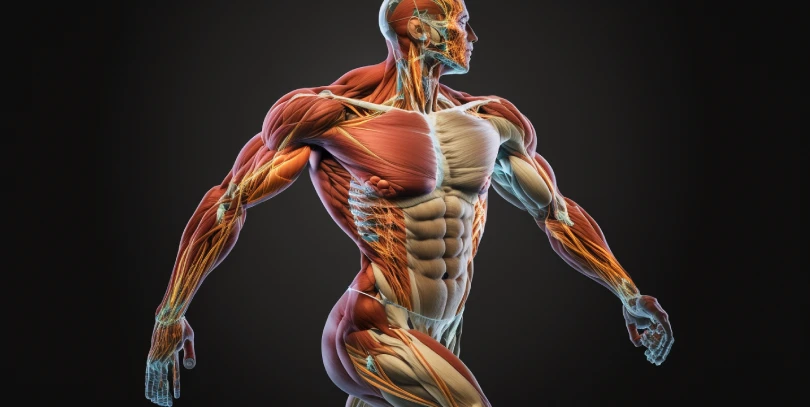Yoga has been practiced for thousands of years and has become increasingly popular in recent times as a form of exercise, relaxation, and spiritual practice. With its many physical and mental benefits, yoga has become a mainstream activity embraced by people from all walks of life.
- Yoga is a popular practice that originated in ancient India and has gained popularity all over the world for its physical, mental, and spiritual benefits. Here are 20 interesting facts about yoga.
- The word “yoga” is derived from the Sanskrit word “yuj”, which means “to unite”.
- The history of yoga began about 5,000 years ago as a form of self-shamanism in the Indus region.
- There are many different styles of yoga, including Hatha, Ashtanga, Vinyasa, Bikram, and Kundalini.
- Yoga is primarily a spiritual practice to bring the mind and body into universal harmony.
- There are eight disciplines practiced in yoga:
- Yama (interpersonal exploration): A harmonious relationship with the world around us.
- Niyama (intrapersonal exploration): Internal self-development to improve yoga practice.
- Asanas (postures): Performing various body positions to strengthen the body and relieve tension in the body.
- Pranayama (refinement of the breath): Control and regulation of the breath and deep diaphragmatic breathing.
- Pratyahara (refinement of the senses): Refining one’s attitude toward the senses — specifically, how the senses should serve the mind rather than the other way around.
- Dharana (concentration): To improve one’s concentration and focus.
- Dhyana (meditation): The practice of meditation.
- Samadhi (quieted mind): Achieving enlightenment or bliss through an improved relationship with the inner self and the outer world.
- The symbol “swastika” was not invented by the Nazis. It is one of the symbols of yoga. “Swastika” in Sanskrit means “that which is associated with well-being.”
- In yoga it is practiced to work through the seven chakras:
- Crown chakra (purple): Sahasrara in Sanskrit, this chakra attaches us as close to the spiritual world as possible, including the dynamic energy that brings us closer to enlightenment.
- Third eye chakra (indigo): Ajna in Sanskrit, this chakra represents higher intuition (third eye) and our potential for focus and improved concentration.
- Throat chakra (blue): Vishuddha in Sanskrit, this chakra encompasses speech and writing. It focuses on restoration and transformation, primarily through channels of communication.
- Heart chakra (green): Anahata in Sanskrit, this chakra holds our potential for compassion, adoration and love. This love refers to loving others and ourselves.
- The solar plexus chakra (yellow): Manipura in Sanskrit, this chakra represents the ego, including our power and other potentially more threatening impulses such as anger and rage.
- Sacral chakra (orange): Svadhisthana in Sanskrit, this chakra is the center of intuition, creativity and self-confidence.
- Root chakra (red): Muladhara in Sanskrit, this chakra represents centeredness, a sense of grounding and our relationship with the earth.
- The practice of yoga has been shown to have a positive impact on mental health, including reducing symptoms of depression and anxiety.
- Scientific studies have proven that yoga can improve cardiovascular health.
- Yoga has been used as a complementary therapy for a range of medical conditions, including heart disease, cancer, and chronic pain.
- The practice of yoga reduces joint and muscle pain.
- Yoga can be practiced by people of all ages and fitness levels.
- Many yoga classes end with the Sanskrit word “Namaste”, which is a gesture of respect and gratitude.
- There are many types of yoga, all with specific goals and benefits:
- Hatha yoga is probably the most traditional approach to yoga practice. The focus is on physical postures (asanas) as well as related behavioral elements.
- Vinyasa yoga focuses on breathing and stringing together various asanas (poses) to perform seamless sequences that create a single “flow.”
- Ashtanga yoga is a dynamic yoga practice that includes sequences of asanas linked by sets of movements (vinyasa) and performed in conjunction with pranayama, bandhas and drishti.
- Kundalini yoga uses specific postures, mantras and chants, meditations, and unique kriyas (practices) to connect more closely with oneself and enlighten consciousness.
- Gentle yoga focuses on therapeutic postures and few movements. The main benefits of this practice are improved breathing, gentle stretching, and reduced stress and anxiety. And all of this is achieved through gentle yoga sequences and a process called Nerve Flossing or Nerve Glide.
- Restorative yoga helps those who struggle with mobility issues. It can help people recovering from injury or those with physical disabilities because the movements are rarely done and only a few slow stretches make up the bulk of each sequence.
- Nidra yoga is a relaxation and meditation-based form of yoga that brings the practitioner into a semi-conscious, near-sleep state.
- Kriya Yoga focuses on leading the practitioner to an advanced state of spiritual development and awakening by performing specific yogic actions, “kriyas,” to improve oneself and live a more fulfilling life.
- Tantric yoga aims to help practitioners find greater contact with their physical selves–through personal exploration and energetic connections, improving their physical well-being and spiritual growth.
- Yin yoga or Taoist yoga includes comfortable, passive postures that are effortless and often involve the use of props. This type of yoga helps in the development of flexibility by stimulating the connective tissue, or fascia, in the joints and along the meridian lines.
- Yoga in a chair is most beneficial for the elderly and those with limited mobility. Practitioners sit in (or stand next to) a chair while doing postures and movements.
- Power yoga involves a full-body workout. Classes are more active, strength and movement-oriented than other more traditional styles of yoga.
- Bikram yoga comes from the name of the Indian yogi Bikram Chowdhury. Two breathing exercises and 26 poses make up this practice, performed in a hot, humid room with bright lights.
- Hot yoga is performed in the studio at about 80-100 degrees Fahrenheit. Unlike Bikram yoga, postures and breathing exercises can vary.
- Iyengar yoga became popular with the help of a famous Indian yogi named Iyengar. Stances and a focus on breath control are central to this practice.
- Self-awakening yoga includes unique movements such as tapping, untwisting, hitting, rolling, etc.
- Kripalu yoga is ideal for all levels, including beginners. The goal is to perform a gentle (Hatha) yoga practice that focuses on spiritual transformation, compassion and physical healing.
- Sivananda yoga includes five basic principles: breathing, relaxation, diet, physical activity, and positive thoughts.
- Yoga therapy is the practice of using yoga as a clinical therapy for emotional problems, mental disorders and physical ailments. It aims to push practitioners to a higher level of health and well-being in general.
- Yoga classes help reduce body weight by 20% within two months without gaining it again.
- Many celebrities, including Jennifer Aniston, Madonna, and Sting, are known to practice yoga regularly.
- The largest yoga magazine in the world, Yoga Journal, which is published in the United States, has published statistics. In the United States there are about 16 million people interested in yoga; in England this figure is about 1.5 million people, and every year yoga is becoming more and more popular.
- Until the first half of the 20th century, the practice of yoga by women was not encouraged in society.
- Doga is yoga for dogs. It was founded in 2002 by New Yorker Suzanne Teitelman. People practice yoga with their pets in an effort to develop a closer relationship with them, and they also use dogs as a support while performing asanas.
Sources:






